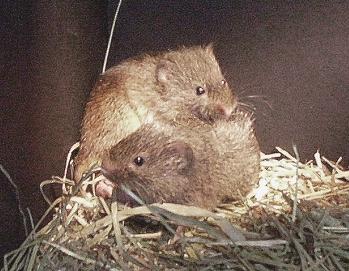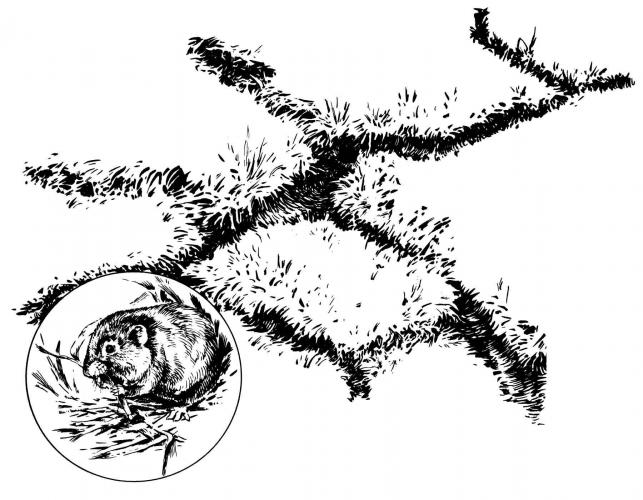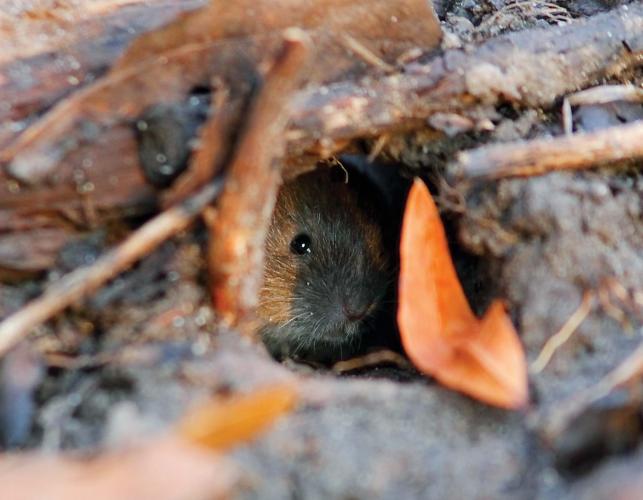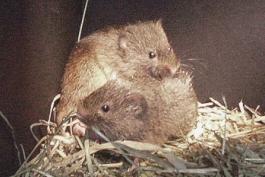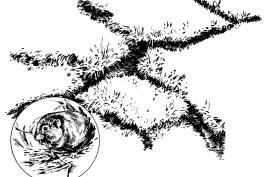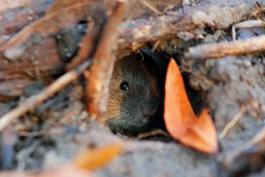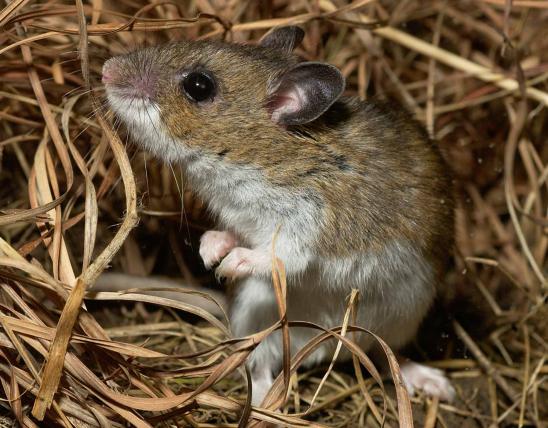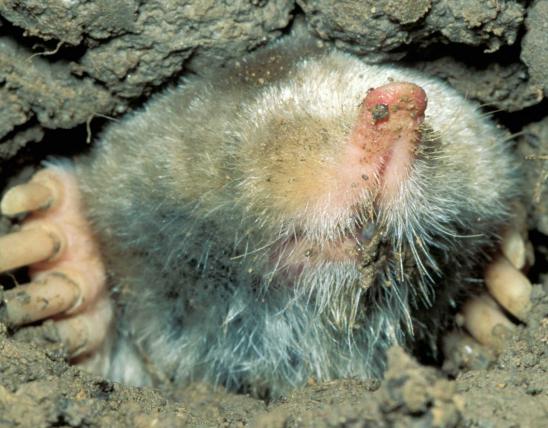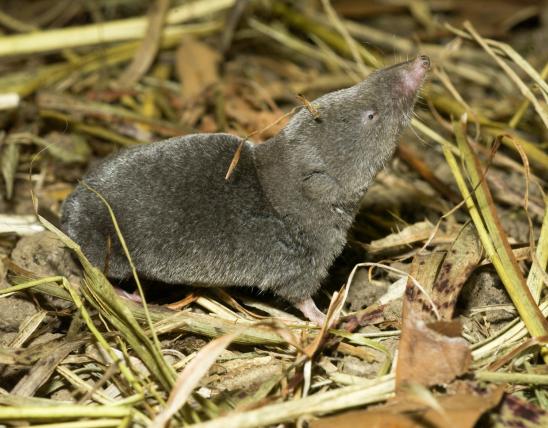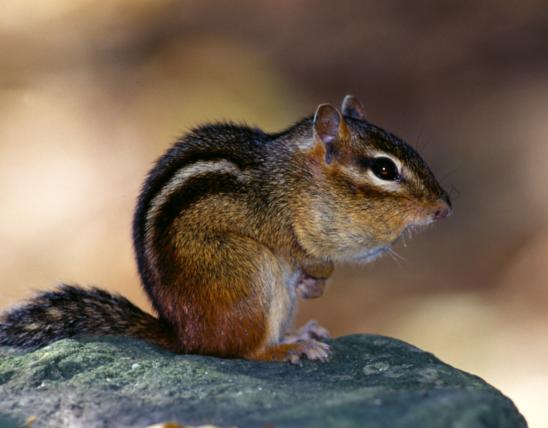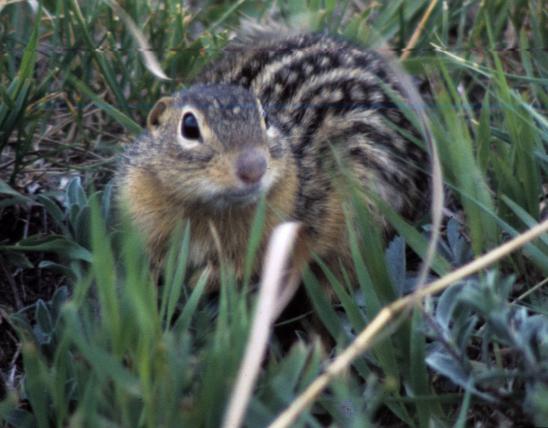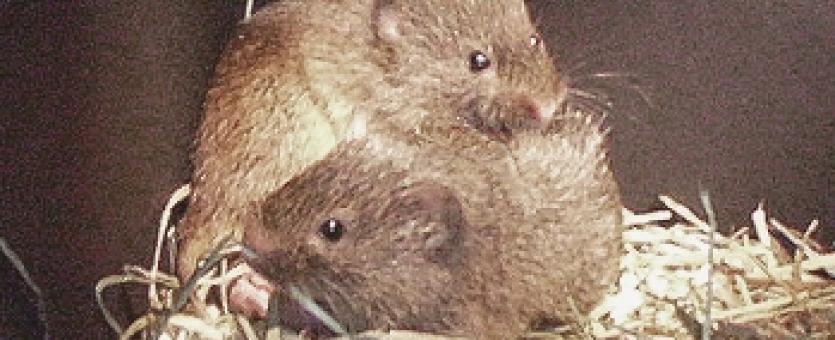
Voles are small, stocky, brown, mouselike rodents. They have short tails, small ears and eyes, a large head, a somewhat blunt, rounded snout, and chisel-shaped teeth.
There are 3 species in Missouri, all quite similar.
The prairie vole (Microtus ochrogaster) and woodland vole (M. pinetorum) are found statewide. The prairie vole’s tail is slightly less than twice the length of the hind foot. The woodland vole’s tail is nearly the same length as the hind foot. The meadow vole (M. pennsylvanicus) is found only in our northern counties. Its tail is longer, at least 2 times the length of the hind foot.
Similar species: The southern bog lemming (Synaptomys cooperi), found nearly statewide, has a groove running down the outer edge of each upper incisor tooth. Its tail is about as long as the hind foot.
Some people confuse voles with moles and shrews. Moles, however, have greatly enlarged front feet with prominent digging claws. Shrews have long, pointed snouts and pointed front teeth.
Total length: about 4½–7 inches (woodland vole 3¼–5¾ inches); weight: to about 2 oz.
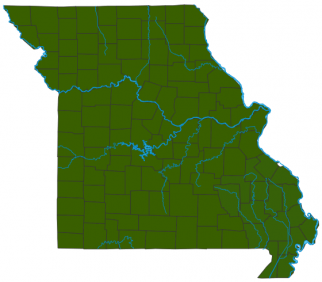
Prairie and woodland voles occur statewide. The meadow vole probably occurs throughout much of northern Missouri, in its preferred habitat of low, damp areas of stream valleys and floodplains.
Habitat and Conservation
Voles build runway systems above and below ground. They build nests out of woven grasses and other materials.
Prairie voles live in fields, grasslands, and thickets.
Woodland voles live mostly underground, in forests or in fields near timber and orchards, gardens, and the like. They need a heavy layer of dead leaves, matted grasses, or other ground litter, and loose, moist, workable soils.
Meadow voles live in moist, low areas with thick grasses, and in drier grasslands near streams, lakes, or swamps.
Food
Voles eat tender stems, leaves, roots, tubers, flowers, seeds, and fruits of many plants. Insects and other small animals may also be eaten. When food is scarce, voles eat the inner bark of trees, shrubs, and vines. Food is stored in chambers near the nest and often aboveground in hollow stumps and other hiding places. A cache may hold 2 gallons of tubers, roots, and small bulbs. When feeding on tall plants, voles clip the stems close to the ground, leaving piles of cut stems along their runways.
Status
Voles are in the same subfamily (Microtinae) as lemmings and muskrats. The members of this subfamily are called microtine rodents.
Life Cycle
Breeding can occur all year, peaking in spring and fall. Gestation is about 3 weeks. Litters may comprise 1–8 young, usually averaging 2–5. Several litters may be produced in a year. Mortality is high. The young are born pink and hairless, with eyes closed. The mother protects them carefully. Weaning occurs 2–3 weeks after birth. Voles mature at an early age. Females can breed at 25 days of age. Males can breed when 5 weeks old. This difference in timing helps prevent inbreeding by littermates.
Control
Human Connections
When numerous in agricultural areas, voles can be pests. They can damage trees by chewing bark from around the base, severing the tree’s vascular system. Their burrowing can damage lawns, and they commonly eat roots, bulbs, and green parts of garden plants.
When voles are causing damage, the Wildlife Code of Missouri allows people to control them. Close cutting of ground cover around fields or orchards can help keep them away. Many other protective measures can be taken. Predators such as hawks and owls should be encouraged.
Ecosystem Connections
Voles work the soil, mixing in their stores of food and waste products, helping plant growth. When they clip stems and leaves, it stimulates new growth in plants. Voles are a major food for many predators, and their numbers influence populations of species such as foxes and owls.
